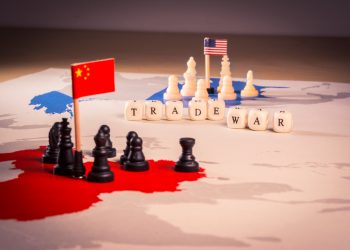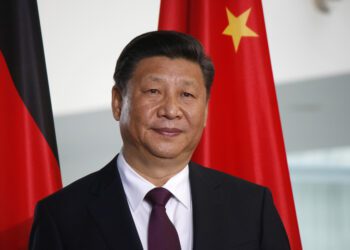As Trump does battle with China, Canada is being caught up in the crossfire.
Canada was already facing an impact from US President Donald Trump’s America First policy before the White House targeted China with tariffs, yet such is the interconnectedness of the two economies that the former country is now facing a second knock-on effect.
The US and Canada, along with Mexico, began negotiating a reboot to the North American Free Trade Agreement (NAFTA) in 2017, which included the imposition of tariffs on a number of Canadian products from steel and aluminium to softwood lumber.
Yet Canadian product prices are now being hit by counter-tariffs from China that were supposedly intended for US targets.
If Trump goes ahead with threats to put tariffs on more than a half-trillion dollars worth of Chinese goods leads China to respond in kind, the list of Canadian products affected is likely to expand.
According to a report by Don Pittis of CBC, soybeans are a perfect illustration of how the process could work.
Unlike some products, such as corn and Alberta oil, the vast majority of Canadian soybeans don’t even pass through the US on their way to global markets, and as such, should be unaffected by foreign counter-sanctions.
Canadian soy, travelling by ship out through the Great Lakes and St. Lawrence Seaway, or by rail to British Columbia ports, is entirely exempt from China’s counter-tariffs.
Yet soybean farmer Philip Shaw told CBC that when the price of US soybeans fell as China stopped buying the commodity, the price of Canadian soy fell as well.
“The imposition of a 25 per cent tariff on American soybeans destroys American soybean demand, which by default destroys it for Canada as well, because our prices are $2 less than they were about eight weeks ago,” Shaw said.
Here is where NAFTA comes in. Despite all Trump’s talk of trade war, unless specifically excluded, agricultural goods, including wheat, corn, beef and pork, flow back and forth across the US-Canada border tariff-free as if they were travelling within one country. The same applies to most non-agricultural commodities including energy and minerals.
Trade supply lines thus start to change. Brazil has begun importing cheap US soybeans for their own use, while exporting their own crop to China at a higher price.
“Grain traders are very adept at figuring out ways to work around these artificial barriers that governments put in place,” Winnipeg agriculture analyst Chuck Penner of LeftField Commodity Research told CBC. “They will find another destination and move them in there. But at a discount. They will move it at a cheaper price.”












